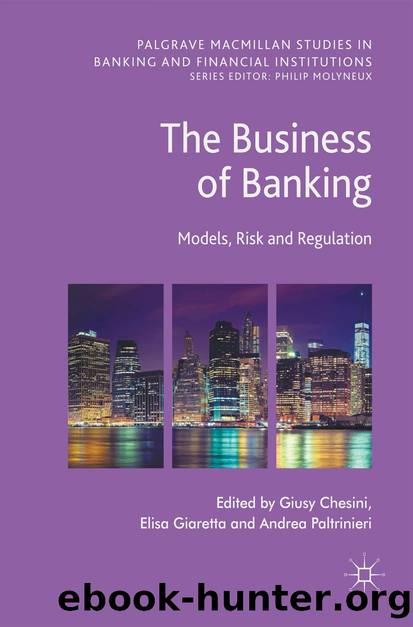The Business of Banking by Giusy Chesini;Elisa Giaretta;Andrea Paltrinieri;

Author:Giusy Chesini;Elisa Giaretta;Andrea Paltrinieri;
Language: eng
Format: epub
Publisher: Springer Nature
Efforts to manage operational risk have been successfully quantified in the last decade, but for reputational risk, the typical approach is still to monitor it inside the broadly defined ârisk culture.â What gets measured gets managed (Diermeier 2008), but quantification of reputation risk is extremely difficult as there is no universally accepted methodology and the concept is broad. If we define reputational risk as unexpected losses due to the reaction of stakeholders to an altered perception of an institution (Kaiser 2014), there are many possible ways of approximating this risk. Moreover, reputational risk does not act in isolation and, on the contrary, is interrelated to many other types of risks. Some sources of gain/loss in the reputational capital include economic performance, stakeholder interface, and legal interface, which can be reflected in client flight, loss of market share, investor flight and increase of cost of capital, and talent flight and increase of contracting costs (Walter 2016). Assuming that reputational risk is managed through strong corporate governance, another approach is to create indexes which measure the quality of firmsâ corporate governance structure and link it to stock price-based performance of the company, assuming that the change in corporate governance index is a signal of quality of firm management (Fox et al. 2016).
Empirical studies typically focus on various surveys, case studies, or media coverage of detrimental events. There is also a lack of tools to link reputational risk with financial performance, and it is unclear how reputation risk can impact capital (Diermeier 2008). In many companies, reputational problems are still considered rather as a problem of public relations than a strategic one, and the response is frequently inadequate to the scale of the damage. The problem of reputational risk measurement is still aggravated for CEE banks, as the stock markets are not efficient in discounting information, so the panel data models using stock market information may be misleading.
Assessing reputational risk is most often not an objective process, but rather it is a subjective assessment that could reflect a number of different factors. Reputation could be perceived as an intangible asset, synonymous with goodwill, which is difficult to measure and quantify. Consistently strong earnings, a trustworthy board of directors and senior management, loyal and content branch employees, and a strong customer base are just a few examples of positive factors that contribute to a bankâs good reputation (Business Insurance 2016).
Establishing a strong reputation provides a competitive advantage. A good reputation strengthens a companyâs market position and increases shareholder value. It can even help attract top talent. Communication between a bank and its stakeholders can be the foundation for a strong reputation. Bank examiners may consider whether an institution responds to customer concerns; whether the stock analyst recommends buying or selling and why; and what the shareholders, employees, or general public are saying about the institution. They also consider whether the institution is expanding outside its normal geographical area and is supportive of the community. On-site, examiners will talk to both bank employees and management to get a sense of corporate ethics.
Download
This site does not store any files on its server. We only index and link to content provided by other sites. Please contact the content providers to delete copyright contents if any and email us, we'll remove relevant links or contents immediately.
Life 3.0: Being Human in the Age of Artificial Intelligence by Tegmark Max(5207)
The Sports Rules Book by Human Kinetics(4089)
The Age of Surveillance Capitalism by Shoshana Zuboff(4003)
ACT Math For Dummies by Zegarelli Mark(3860)
Blood, Sweat, and Pixels by Jason Schreier(3503)
Unlabel: Selling You Without Selling Out by Marc Ecko(3485)
Hidden Persuasion: 33 psychological influence techniques in advertising by Marc Andrews & Matthijs van Leeuwen & Rick van Baaren(3310)
Urban Outlaw by Magnus Walker(3252)
The Pixar Touch by David A. Price(3231)
Bad Pharma by Ben Goldacre(3115)
Project Animal Farm: An Accidental Journey into the Secret World of Farming and the Truth About Our Food by Sonia Faruqi(3034)
Brotopia by Emily Chang(2906)
Kitchen confidential by Anthony Bourdain(2848)
Slugfest by Reed Tucker(2820)
The Content Trap by Bharat Anand(2791)
The Airbnb Story by Leigh Gallagher(2714)
Coffee for One by KJ Fallon(2441)
Smuggler's Cove: Exotic Cocktails, Rum, and the Cult of Tiki by Martin Cate & Rebecca Cate(2352)
Beer is proof God loves us by Charles W. Bamforth(2264)
